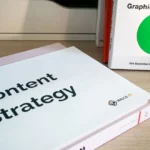When I first dipped my toes into the world of social media live events, I was overwhelmed by the sheer volume of engagement required. It felt like trying to juggle while riding a unicycle on a tightrope. Then, I discovered the magic of chatbots. These nifty digital assistants transformed my approach and turned my chaotic experience into a well-orchestrated performance. Let me walk you through how I used chatbots for real-time engagement during live events, and how you can do it too.
Setting the Stage
Before diving headfirst into chatbot integration, it’s essential to define the goals and the scope of your live event. For instance, are you hosting a Q&A session, a product launch, or a casual hangout? Knowing your purpose helps shape the chatbot’s functions and responses.
In my case, I was hosting a live Q&A session on Instagram for our new product launch. The aim was to keep the audience engaged, answer common queries, and create a buzz around the product. With these goals in mind, I started customising my chatbot.
Choosing the Right Chatbot Platform
There are numerous chatbot platforms out there, but not all of them cater to live social media events. After some research, I opted for a platform that integrated seamlessly with Instagram and had robust real-time engagement features. Platforms like Chatfuel, ManyChat, and MobileMonkey are popular choices.
I chose ManyChat for its user-friendly interface and comprehensive features. It allowed me to build a chatbot without any coding knowledge, which was a huge plus.
Designing the Chatbot Experience
Designing the chatbot was akin to scripting a play. I had to anticipate the audience’s questions and craft responses that were not only accurate but also engaging. ManyChat’s drag-and-drop builder made this process intuitive.
1. Greeting and Onboarding: The first step was to create a warm, welcoming message. I set up the chatbot to greet users as soon as they joined the live event, introducing itself and explaining its role. This helped set expectations right from the start.
2. Answering Common Questions: I compiled a list of frequently asked questions about the product and pre-programmed the chatbot to respond to these queries. This ensured that the audience received instant answers, keeping the engagement high.
3. Collecting Feedback: I also integrated a feedback loop. After answering a question, the chatbot would ask the user if they found the information helpful. This not only provided valuable insights but also made the interaction feel more personalised.
Testing and Tweaking
Before the big day, I ran several test sessions with the chatbot. This was crucial to ensure everything worked smoothly. I invited a few colleagues to simulate a live event and interact with the chatbot. Their feedback was invaluable, highlighting areas that needed tweaking.
For instance, we discovered that some responses were too robotic. To remedy this, I added a touch of human-like warmth to the chatbot’s replies, incorporating emojis and a conversational tone.
Going Live
On the day of the live event, the chatbot was ready to shine. As soon as we went live on Instagram, the chatbot sprang into action. It greeted attendees, answered questions, and even shared snippets about the product that kept the excitement alive.
One of the standout moments was when a user asked a particularly complex question. The chatbot, recognising it was beyond its programmed scope, seamlessly redirected the query to a live moderator. This ensured that the user received a comprehensive answer without feeling neglected.
Monitoring and Adapting in Real-Time
One of the biggest advantages of using chatbots is the ability to monitor and adapt in real-time. Throughout the event, I kept an eye on the chatbot’s interactions. This allowed me to step in whenever necessary and make on-the-fly adjustments to the chatbot’s responses.
For instance, when we noticed a surge in questions about a specific feature, we quickly added more detailed responses about it. This adaptability ensured that the audience remained engaged and well-informed.
Reflecting on the Experience
By the end of the live event, the chatbot had interacted with hundreds of attendees, answering questions, collecting feedback, and even sharing discount codes. The level of engagement was phenomenal, and the audience appreciated the instant responses and seamless experience.
Using chatbots for real-time engagement during social media live events proved to be a game-changer. It not only eased the burden of managing interactions but also elevated the overall experience for the audience. With the right planning, design, and real-time monitoring, chatbots can transform your live events into interactive, engaging, and memorable experiences.
So, if you’re planning a live social media event, don’t hesitate to incorporate a chatbot. It might just be the secret ingredient you’ve been missing.











